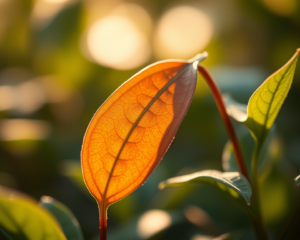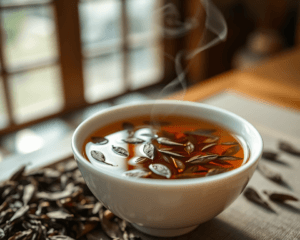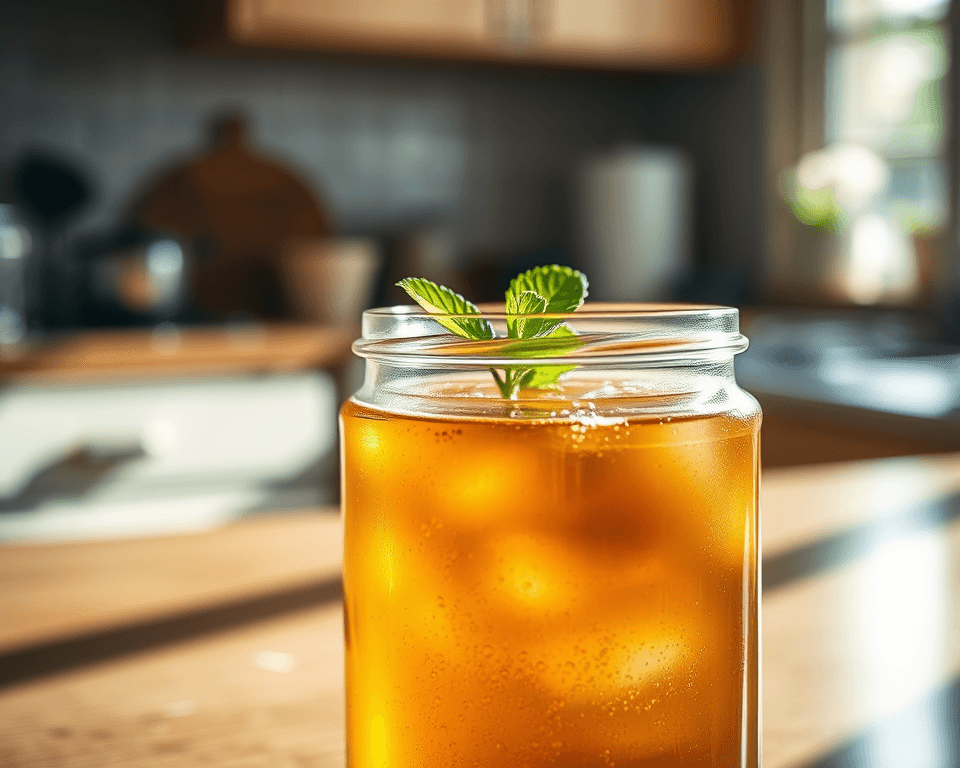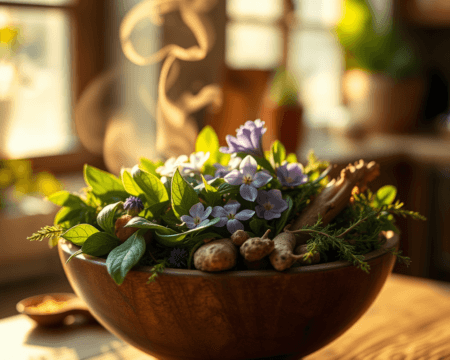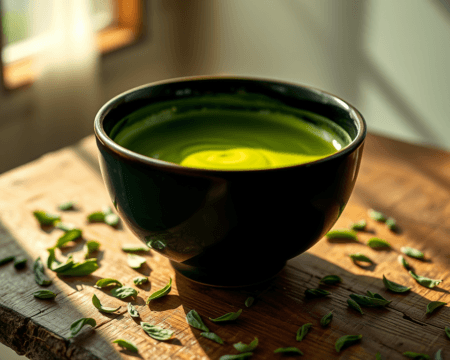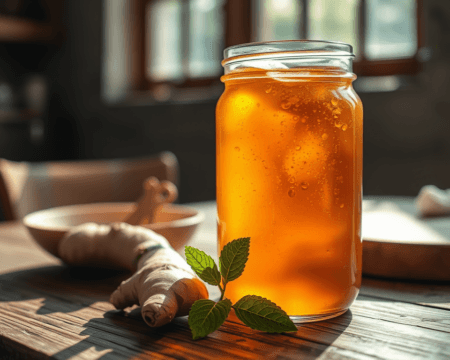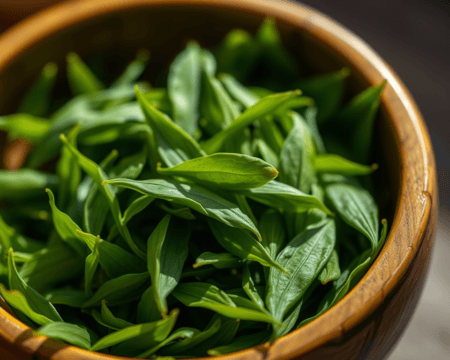Kombucha, that fizzy, tangy elixir we can’t get enough of! If you’re like me and love to brew up your own batches, you know the thrill of that first sip of your perfectly crafted flavor. But wait! How do you make sure it stays fresh and fabulous? The secret lies in how you store that liquid gold. Get ready, because I’m about to break down everything you need to know about storing kombucha for optimal flavor and quality.
Key Takeaways
- Temperature is crucial—keep your kombucha in a stable, chilly environment to lock in its zest.
- Light can be a flavor thief; using the right containers will protect your brew.
- Sealing techniques can make or break your fizz factor—learn how to cap it right!
- Different kombucha varieties have unique storage needs. Don’t treat them all the same.
- Troubleshooting storage problems can prevent off-flavors and sediment issues.
Understanding Storage Conditions for Kombucha
The magic of kombucha lies not just in the brewing phase, but how you care for it afterward. The right storage conditions play a pivotal role in maintaining the flavor and quality of your drink.
Ideal Temperature for Storing Kombucha
First up, let’s talk temperature. Kombucha is a sensitive soul. It thrives in a stable environment, so aim for the optimal temperature range of 35°F to 45°F—just like your fridge. Avoid fluctuations like the plague; those changes can kill your kombucha’s zing.
When I first started brewing, I made the rookie mistake of leaving my bottles in a warmer corner of the house. Big no-no! It led to over-fermented brews that were practically vinegar. You don’t want that. Use a thermometer to monitor the storage space, and if you’re feeling a bit fancy, consider investing in a wine fridge. Brands like NewAir offer compact models that keep your booch cool at about $200. You’ll save your kombucha from “fermentation regrets.”
The Role of Light in Kombucha Storage
Next on the list is light exposure. Your kombucha is a light-sensitive gem, and exposure to UV light can degrade its flavors fast. Always opt for a dark storage area! Think about it—how do you protect champagne? You don’t just slap it in any clear bottle and toss it on the counter.
Storage containers matter. I prefer amber glass bottles for keeping light at bay, and that’s not just a trend; it’s science! These bottles filter out harmful rays and help maintain all those complex flavor profiles you worked so hard for. Clear bottles just won’t cut it. Grab a box of Belgian-style 16oz amber bottles on Amazon for about $30, and thank me later.
Choosing the Best Containers for Kombucha Storage
Now that you’ve got the storage conditions nailed down, let’s chat about containers. What you put your kombucha in can impact the flavor and quality. Here’s the scoop!
Types of Containers and Their Impact on Kombucha
We’re talking material here. Glass is king. Sure, you might think plastic is easier, but trust me; it can leach chemicals into your brew. I stick to glass for fermented beverage storage. When I switched from plastic to glass containers, the flavors were richer and the drinks overall more enjoyable.
For those looking to adventure a bit, stainless steel is an option too, but it’s not my first choice. It’s better suited for secondary fermentation or transporting your kombucha. Consider picking up some quality glass fermentation jars. I love Weck jars, which can often be found for about $40 for a set of six, giving your drinks a chic Airbnb vibe while keeping them safe.
Proper Sealing Techniques for Storage
Now let’s tackle sealing. This is a game changer for maintaining the carbonation that makes kombucha special. If your bottles aren’t sealed tightly, you may as well be pouring it down the sink; it’ll go flat faster than you can say “probiotic!”
Airtight sealing is essential. I always use crown caps or swing-top bottles. For those who love a little fizz, swing-top bottles like Grolsch can do the trick, and they’re relatively cheap at around $15 for a set of six. When sealing, make sure there’s no gap—trust me, you want every bubble to stay inside.
Tips for Maintaining Flavor and Carbonation
Now that we’re all about storage, let’s take it up a notch. You want to keep that incredible flavor and refreshing fizziness going, right? Here’s how.
Best Practices for Flavor Retention
Time for some flavor-saving tips! My top secret? Don’t let your kombucha hang out too long in storage. Use it up to a month after bottling. The flavors not only peek at their best at that point, but they also maintain complexity. Try playing around by combining flavors too. I’ve found that blending elderflower with ginger gives a delightful twist that keeps drinkers asking for more.
If you’re a flavor buff, jot down some tasting notes after each batch. That way, you can look back and remember what worked like a charm and what didn’t. Trust me, it’s a simple game-changer for your next brew.
Carbonation Control while Storing
Let me tell you about carbonation management. You’ve got your tight seals, but what about the pressure inside those bottles? Too much pressure can cause explosions, and that’s not what you want happening after you’ve put in all that effort.
Ensure you’re not over-filling when bottling your mix. Leave a good inch or so of headspace at the top. For those who love some extra fizz, using a carbonation cap might be your best friend! They’re about $25 and work wonders at keeping that bubbly goodness intact. When storing, check those bottles regularly—slightly release the pressure if it builds up too much. You want to keep that effervescence but avoid a kombucha eruption everywhere.
Troubleshooting Common Storage Issues
Life happens, and sometimes we run into some hiccups. Here’s how to tackle common storage issues head-on.
Identifying and Resolving Storage Problems
Let’s get real about storage contamination. If your kombucha starts tasting funky, or you spot mold, it’s a sign you need to reassess your storage practices. If you ever notice off flavors, don’t panic! That could be due to improper sealing or even leftover yeast in the bottles.
If contamination does seem to rear its ugly head, toss that batch. Trust your palate. A good guideline to remember is if it smells off, it probably is. To avoid these issues, take time to clean your containers thoroughly before every storage round. A hot water rinse or a mix of vinegar and baking soda does wonders for your jars.
Addressing Separation and Sedimentation
Ah, sediment—the natural part of kombucha we all love and hate! That little layer of goo at the bottom is completely normal, but sometimes it can accumulate in a way that’s less than appealing. While it’s completely harmless, having too much can trigger unwanted texture in your drink.
If you notice extra sediment, give your bottles a slight swirl before pouring. This combines those beautifully complex layers into the drink itself. Understanding kombucha layers can also help you pinpoint why it’s happening. If sediment is a consistent problem, it might be time to re-examine your brewing process or consider a fine mesh strainer during bottling.
Special Considerations for Different Kombucha Types
Just when you thought you had it all figured out, there’s still more to explore! Kombucha comes in all shapes, sizes, and flavors, and each type has its unique needs.
Named Flavors and Their Storage Needs
Let’s kick things off with fruit-infused and herbal kombucha. These flavors can be tricky. They might have all the zest in the world, but if they aren’t stored properly, the delicate fruits can go soggy and sloshy, ruining your masterpiece.
I’ve learned the hard way—bottling herbal kombucha with fresh herbs means I have to consume it way earlier than I’d like. A general rule of thumb is that fruit flavors require cooler storage and should be consumed sooner than more robust flavors like spiced ginger. Stick to that one-month rule, but with fruit flavors, keep it limited to two weeks.
Bottling and Storing Differences
Lastly, let’s clarify the bottling vs. storing game. Here’s the kicker: just because you bottle it doesn’t mean it’s ready to gumble around for ages. The bottling process is an exciting transition, and how you handle that can dictate whether you’ll nail that coveted robust flavor.
Once bottled, “cold storage” is key. If you want the best brew, keep your bottles in the fridge immediately post-bottling to slow down the fermentation process. Don’t let those double fermentation vibes take over! If you’re experimenting with different stages, track when you should transition your creations to the fridge and adjust to keep flavor in check.
In the world of kombucha, flavor and quality are in your hands! The next time you pop open that homebrew kombucha, remember every step, from storage to bottling, impacts its delightful essence. Cheers to making the most of your kombucha adventure!
Frequently Asked Questions
What is the ideal temperature for storing kombucha?
The ideal temperature for storing kombucha is between 68°F to 72°F (20°C to 22°C). This range helps maintain the fermentation process without causing the kombucha to ferment too quickly or develop off-flavors.
How can I protect my kombucha from light exposure?
To protect your kombucha from light exposure, store it in dark glass bottles or opaque containers. This helps to prevent light from degrading the flavors and colors of your brew, which can lead to undesirable results.
What are some common sealing techniques for kombucha bottles?
Common sealing techniques include using metal caps, corks, or swing-top bottles. Ensure that the seal is tight to maintain carbonation; a loose seal can lead to flat kombucha.
Why do different kombucha varieties require unique storage methods?
Different kombucha varieties have different flavors, ingredients, and fermentation processes that influence their storage needs. For instance, flavored kombucha may require more careful monitoring to prevent over-carbonation.
How can I troubleshoot sediment issues in my kombucha?
To troubleshoot sediment issues, try filtering your kombucha before bottling it. Additionally, storing it upright can help keep sediment settled at the bottom, making it easier to pour without disturbing it.
Can I store homemade kombucha in the refrigerator?
Yes, you can store homemade kombucha in the refrigerator. Doing so slows down the fermentation process, preserving the flavors and ingredients. Just remember to keep it sealed to maintain carbonation.
How can I tell if my kombucha has gone bad?
Signs of spoiled kombucha include an off smell, an unusual color, or excessive and uncharacteristic sediment. If you notice these changes, it’s best to discard it to avoid any risk of contamination.
Is it safe to consume kombucha after an extended storage period?
Kombucha can be safe to consume after extended storage, but its flavor and carbonation may decline over time. Always check for signs of spoilage before drinking and consider consuming it within 1-3 months for best quality.
How should I store my kombucha during transportation?
When transporting kombucha, keep it chilled in an insulated bag or cooler. Ensure the bottles are sealed securely to prevent leakage and carbonation loss, and avoid exposing them to direct sunlight for prolonged periods.
